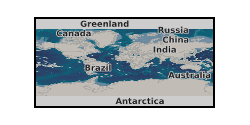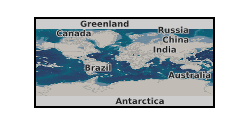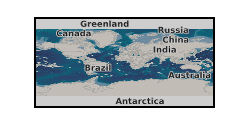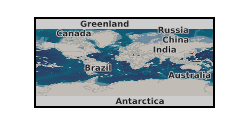Platinum group elements
Type of resources
Topics
Keywords
Contact for the resource
Provided by
Years
Formats
Update frequencies
-

These files contain data for microscopy and mineral analyses on Fe-Ni-Cu sulfide minerals in the upper mantle and lower crust of the Kohistan arc system. Samples are dunites, harzburgites and pyroxenites with variable proportions of chromite from the Kohistan collection of Prof Brian Windley, that is held at Leicester University. Data were acquired during 2017 and 2018. Folders include: reflected light microscopy images of various sulfide minerals and mineral textures in thin section; maps and backscattered electron images of areas of thin sections; and metadata (time-resolved analysis spectral data) for laser ablation ICP-MS analysis of sulfide minerals. Laser-ablation ICPMS analyses were performed using a ESI UP213 laser system coupled to a Thermo iCAPRQ ICP-MS system at the School of Earth and Environmental Sciences, Cardiff University. The data were gathered to understand the concentrations of precious and semi-metal trace elements and their likely mineral forms in the various Fe-Ni-Cu sulfide minerals. Collected under the From Arc Magma to Ore System (FAMOS) Project.
-

Mineralogical and geochemical data from sulphides and other ore minerals from the Skouries porphyry Cu-Au deposit, Greece. Samples were taken from several boreholes from the Skouries mine, courtesy of Eldorado Gold Corporation. This data contains petrological photographs; identification of platinum group minerals and precious metal minerals; and trace element concentration of ore minerals. This data was collected as part of the TeaSe consortium NERC grant in order to determine the concentration and hosting of critical and precious metals in various types of ore deposits and barren rocks from different geological environments. This data was collected and interpreted by researchers at Cardiff University and is used in a paper, available at https://doi.org/10.1016/j.oregeorev.2018.06.014.
-

Samples are dunites, harzburgites and pyroxenites with variable proportions of chromite from the Cabo Ortegal collection of the late Prof Hazel Prichard, that is held at Cardiff University. Data were acquired during 2021 and 2022. Folders include: reflected light microscopy images of various sulfide minerals and mineral textures in thin section; element maps and backscattered electron images of areas and selected complete thin sections; and metadata (time-resolved analysis spectral data) for laser ablation ICP-MS analysis of sulfide minerals. Petrographic assessment by element mapping used a Zeiss Sigma HD Field Emission Gun Analytical Scanning Electron Microscope (A-SEM) equipped with two Oxford Instruments 150 mm2 Energy Dispersive X-ray Spectrometry (EDS) detectors at the School of Earth and Environmental Sciences, Cardiff University. Operating conditions were set at 20kV and aperture size to 120 µm, with a nominal beam current of 4 nA and working distance of 8.9 mm. Using Aztec software, maps were acquired at 100 to 150 x magnifications, with resulting pixel sizes ranging from 10 to 22 µm, depending on the resolution of acquired spectral images. Laser-ablation ICPMS analyses were performed using a ESI UP213 laser system coupled to a Thermo iCAPRQ ICP-MS system at the School of Earth and Environmental Sciences, Cardiff University. The data were gathered to understand the concentrations of precious and semi-metal trace elements and their likely mineral forms in the various Fe-Ni-Cu sulfide minerals.
-

Sample locations and geochemical data from the Aurora Ni-Cu-PGE magmatic sulphide deposit, Northern Bushveld Complex, South Africa. Samples were taken from two boreholes on the La Pucella farm, courtesy of Pan Palladium Limited. This data contains petrological photographs; scanning electron microscope element maps and identification of platinum group minerals and precious metal minerals; and trace element concentration of ore minerals. This data was collected as part of the TeaSe consortium NERC grant in order to determine the concentration and hosting of critical and precious metals in various types of ore deposits and barren rocks from different geological environments. This data was collected and interpreted by researchers at Cardiff University and is used in a paper, available at https://doi.org/10.1016/j.oregeorev.2019.02.008.
 NERC Data Catalogue Service
NERC Data Catalogue Service